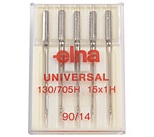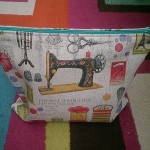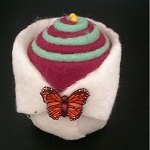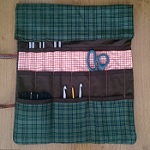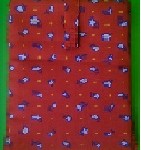Pins n’ Needles… Tips & Tricks

Fabric Basics…
Choosing the ri ght fabric can be a bit tricky especially if you are just starting up in your sewing journey…The first visits to fabric shops can be overwhelming, but also a good teaching experience. There were many times that I read other blogs or checked online fabric stores for better deals always finding nice fabrics, but I had no idea how do they feel like in their touch. I always ended up with one question…”Which one is the right fabric for my project”? Read more…
ght fabric can be a bit tricky especially if you are just starting up in your sewing journey…The first visits to fabric shops can be overwhelming, but also a good teaching experience. There were many times that I read other blogs or checked online fabric stores for better deals always finding nice fabrics, but I had no idea how do they feel like in their touch. I always ended up with one question…”Which one is the right fabric for my project”? Read more…
Seam Allowances
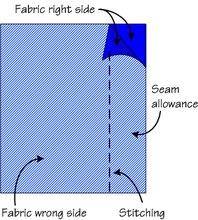
Most sewing machines have guide markers to align the fabric against the different seam allowances. Make sure that the needle is set in the centre position in order to keep the fabric aligned with the guide marker.
You can also use a tape measure or a small paper card to make a cutting of the required seam allowance and use it as your guide.
What is selvedge, grainline and bias?
In this part of fabric you often see manufacturer’s information, contrasting trim, etc. The selvedge of the fabric may also have colour dots which show the colours used in the fabric and lines to indicate the repeat of a print on the fabric.
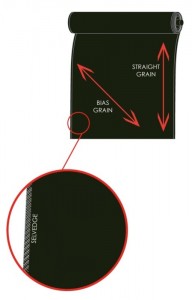
Image: Grainlines
Grainline is is the direction that the woven threads run. The the main grainline (i.e. lengthwise grain) runs the length of a fabric and is parallel to the selvedge. The crosswise grain runs perpendicular to the selvedge.
Bias is an invisible line that’s at a 45 degree angle (i.e. perpendicular) to the crosswise and lengthwise grain. When garments are cut on the bias, they move easily with the body as it has a good deal of stretch.
Sewing machine needles sizes and types
You need to choose the right size needle for your fabric. Using a large needle on delicate fabric, for example, will cause visible holes and may cause problems such as the needle shoving the fabric down into the bobbin casing. You might also find that the stitches slip. On the other hand, using a small needle on heavy fabrics can cause problems such as the needle breaking under the pressure.
Needle types for simple sewing tasks
- Universal: The needle’s point is slightly rounded for use with knit fabrics, but sharp enough to pierce woven fabrics.
- Denim/jeans: This type of needle has an extra-sharp point and stiff shank, which makes it suitable for stitching denim, heavy imitation leather or other densely woven fabrics.
- Ballpoint: This needle has a blunt, rounded tip that slips between fibres rather than piercing them. Use this needle for sewing coarse knits, lycra and other fabrics that tend to run if you snag them.
- Twin needle Twin needles are constructed with two shafts on a crossbar which extends from a single shank. They’re ideal to use for decorative stitching and creating multiple, uniform stitching rows. Two numbers are listed on the packaging; the first number represents the distance between the needles and the second number is the metric needle size.
Types of threads for sewing
- Cotton: Suitable for light to medium-weight fabrics which have little or no stretch to them. Cotton thread will not ‘give’, and the stitches may break if used on a stretchy knit fabric.
- Polycotton: This thread is usually labelled ‘all-purpose’ and is the thread you will see most frequently in fabric shops. It’s suitable for all types of fabric and for both hand and machine sewing.
- Polyester: Most suitable for synthetic fabrics or fabrics with a lot of stretch to them. The finish of this thread, however, can appear waxy or shiny.
- Silk: Silk thread is more elastic than cotton, so opt for silk if your fabric has stretch to it. Use on very thin or delicately woven fabrics such as those used for lingerie or sheer garments.
- Heavy duty: Used for sewing projects that require extra strong and durable stitches, such as upholstery, using very heavy or stiff fabric.
What is the tracing wheel
Tracing wheels are usually a blunt, serrated edge or needle point style wheel on a wooden or plastic handle and they are used to transfer patterns and/or markings either between patterns or between patterns and fabric.
The serrated or spiked wheels are the ones most commonly used in pattern making which pierce a line of small holes through from one layer of paper or cardboard onto the layer underneath. You can use a pencil to draft the newly traced pattern.
-
 Fabric Scissors… You have decided on your next project and now you are ready to cut out your fabric? Well, cutting your fabric can end up in a disaster if you don’t use the correct scissors. Make sure you buy a good pair of sharp fabric scissors or tailor’s shears. All you need to do is sharpen them occasionally, oil the pivot screw, and never use them to cut anything else but fabric.
Fabric Scissors… You have decided on your next project and now you are ready to cut out your fabric? Well, cutting your fabric can end up in a disaster if you don’t use the correct scissors. Make sure you buy a good pair of sharp fabric scissors or tailor’s shears. All you need to do is sharpen them occasionally, oil the pivot screw, and never use them to cut anything else but fabric.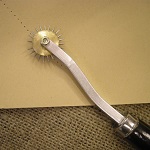 Trace patterns using a tracing wheel… This is the easiest way to trace any pattern and/or markings. Simply lay your paper of choice on a flat hard surface, ideally wooden as the wheel’s sharp edges can pierce through soft surfaces, and place your pattern on top of it securing them together with a few pins. Take your tracing wheel and start tracing along the lines of your pattern for the desired size. Use a pencil at the end to draft around the pierced sections and create your pattern. You can actually use this method directly on the final fabric, however pay attention on the type of fabric you use as the sharp edges of the tracing wheel can damage it.
Trace patterns using a tracing wheel… This is the easiest way to trace any pattern and/or markings. Simply lay your paper of choice on a flat hard surface, ideally wooden as the wheel’s sharp edges can pierce through soft surfaces, and place your pattern on top of it securing them together with a few pins. Take your tracing wheel and start tracing along the lines of your pattern for the desired size. Use a pencil at the end to draft around the pierced sections and create your pattern. You can actually use this method directly on the final fabric, however pay attention on the type of fabric you use as the sharp edges of the tracing wheel can damage it. -
 When should you use tacking/basting? Basting refers to long running stitches, sewn by machine or by hand in order to temporarily hold pieces of fabric together and/or a seam until it can be permanently sewn. It is preferable to using pins for marking as some fabrics can create a curvy/gathering effect around the pin. However, note that certain fabrics are not suitable for basting as they can show holes (e.g. leather).
When should you use tacking/basting? Basting refers to long running stitches, sewn by machine or by hand in order to temporarily hold pieces of fabric together and/or a seam until it can be permanently sewn. It is preferable to using pins for marking as some fabrics can create a curvy/gathering effect around the pin. However, note that certain fabrics are not suitable for basting as they can show holes (e.g. leather).
See my Latest Projects…
How to Sew a Zipper Pouch
02/25/2016Re-fashion jeans into a denim skirt
11/26/2015Re-fashion sweatshirt
06/26/2015Slouchy Beanie Hat
02/18/2015Sand Waves Cable Scarf
02/10/2015How to adjust waistbands
07/17/2014Felt pin cushion
06/20/2014Knitting needles case
06/19/2014Slip in mobile phone case
06/10/2014Revamp your denim shirt
05/26/2014Accessorise your ankle boots
05/12/2014Search
Login
Follow Me
Categories
-
Recent Posts
